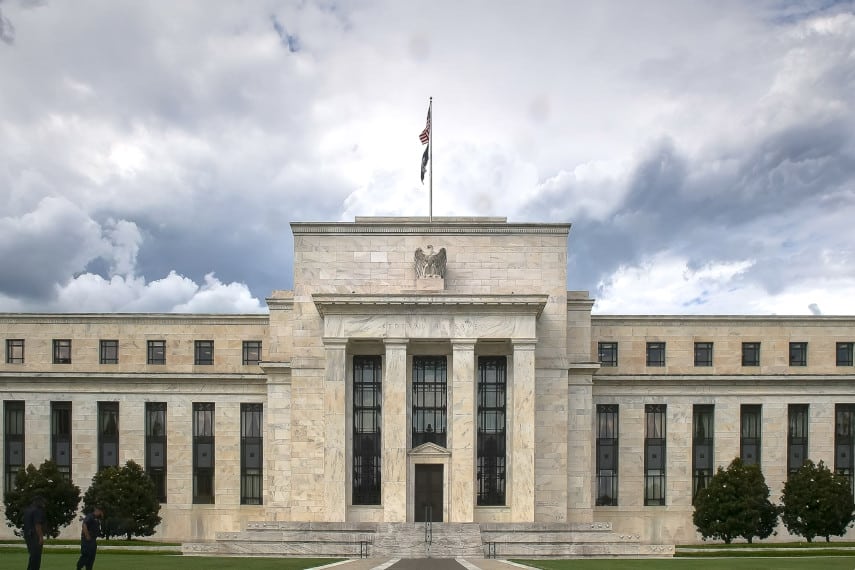
The last couple of weeks have seen an unprecedented amount of Federal Reserve intervention in financial markets. Just to recap, here’s what the Fed had already done as of last Friday:
- Pledged up to $5.5 trillion in repo market liquidity;
- Cut its target federal funds rate to zero;
- Promised at least $700 billion in quantitative easing;
- Re-opened the Commercial Paper Funding Facility (CPFF), the Primary Dealer Credit Facility (PDCF), and the Money Market Mutual Fund Liquidity Facility (MMLF);
- Opened up US dollar swap lines with numerous foreign central banks.
But that wasn’t enough. The Fed over the weekend went whole hog in announcing a raft of new facilities and actions. Let’s look at just a few of them.
1. $625 Billion in QE
The Fed had previously announced that it would launch $700 billion in quantitative easing (QE). But the time frame for those purchases evidently wasn’t considered fast enough. So the Fed is purchasing $125 billion in securities each business day this week, for a total of $625 billion in QE just this week. Remember, QE2 way back when was a total of $500 billion over seven months. So this latest action dwarfs that.
In fact, the rate at which the Fed is purchasing assets this week will boost its balance sheet to nearly $5 trillion just by the end of the week. And if that rate were to be annualized, it would mean a total of $32.5 trillion in asset purchases over the course of the year. That’s equivalent to the total of all US federal government and US corporate debt in existence. Might that be the Fed’s ultimate goal?
2. Purchases of Corporate Bonds
Traditionally the Fed has stuck to a handful of different types of assets when it engages in QE. That means Treasury bonds and agency (i.e. Fannie & Freddie) mortgage-backed securities (MBS). But the Fed is now expanding its purchase options, seeking to pump new money anywhere and everywhere.
The Fed announced Monday morning that it would begin to purchase agency commercial MBS, seeking to backstop the commercial real estate market. And the Fed has established two new Fed funding facilities, the Primary Market Corporate Credit Facility (PMCCF) and the Secondary Market Corporate Credit Facility (SMCCF), to purchase corporate bonds. The PMCCF would purchase newly-created corporate bonds from companies facing financial difficulties (e.g. Boeing), while the SMCCF would purchase corporate bonds (most likely worthless ones) from secondary markets.
3. Backstopping Municipal Bonds and Commercial Lending
The Fed is also pledging to support municipal bonds and asset-backed securities (ABS) backed by student loans, credit card loans, auto loans, etc. It’s doing that through re-establishing the Term Asset-Backed Securities Loan Facility (TALF) and expanding the operations of the CPFF and MMLF to support municipal bond issuers.
4. Further Lending
The Fed has also pledged to establish a Main Street Business Lending Program to support lending to small and medium-sized businesses. Details are forthcoming, but it sounds like the Fed might be getting into the business of direct loans to small businesses, a dangerous precedent to set, and one in which the Fed may very well be picking winners and losers.
About the only thing the Fed hasn’t pledged buying is equities, but maybe that day isn’t far off. In fact, Boston Fed President Eric Rosengren has already stated that he believes the Fed should be able to buy equities. The Fed is a far way off from its mission to supply an elastic currency and to act as a lender of last resort to the banking system, and has instead made itself into a guarantor of financial stability, a dangerous role to play.
The Fed’s approach to everything is to flood the financial system with liquidity, preferring to suffer the results of too much money in the system rather than allow the economy to face the consequences of previous bouts of monetary easing. There’s a very real danger now that the Fed may let things get out of control, will create too much money, and put the country on the road to hyperinflation.
As previous hyperinflationary crises have taught, those who have invested in gold, silver, and other tangible assets will be those best positioned to survive such a crisis. Now’s the time to make sure that you’re investing in gold and silver while you still can, before the Fed’s actions cause the economy to spiral out of control.





